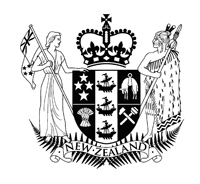Hon Kris FaafoiHon Shane Jones |
 |
| 29 April 2020 |
PĀNUI PĀPĀHO |
Rural broadband upgrade to boost COVID-19 recovery in remote communitiesNew investment in rural network capacity announced today will help lift the development and wellbeing of isolated communities as New Zealand’s economy recovers from COVID-19, Broadcasting, Communications and Digital Media Minister Kris Faafoi and Infrastructure Minister Shane Jones said. The Government has allocated up to $15 million in savings from the Ultra-fast Broadband initiative to improve rural broadband capacity by:
“This investment brings broadband services to rural households that are currently without access to the internet, and means remote communities will be much better equipped to get going again when we exit lockdown,” Kris Faafoi said. “With the impacts of COVID-19 seeing increasing numbers of New Zealanders using broadband for education, work and maintaining links with friends and whānau, connectivity is more important than ever before. “The Government’s aim is to provide access to around 99.8 per cent of New Zealanders. However, while that work continues some households in isolated regions require reliable access to broadband services in light of COVID-19 – particularly households with school-age children who need internet access for remote learning. The work brings forward capacity upgrades to meet increased demand for the internet where the urgency is most acute,” Kris Faafoi said. Infrastructure Minister Shane Jones said upgrading infrastructure is likely to be the fastest way to provide broadband to rural households where there is currently coverage but the towers are at or near capacity. “This work will bolster network capacity for under-served rural households. “Broadband connectivity is crucial for kick-starting economic activity in rural areas and the capacity upgrades are urgent. “While New Zealand looks to put the economy on the path to recovery, we must ensure our rural communities aren’t left behind. Having broadband services means tamariki can do remote learning from home, and whānau will have better access to information and business and employment opportunities. “The Government, through Crown Infrastructure Partners, is prioritising the upgrade of mobile towers in rural areas where there are high numbers of school-age children living in households that cannot access the internet. “This will provide school-age students in remote areas with access to the digital connectivity programme that the Government recently rolled out to support distance learning. It means that students, particularly those in low-income rural households, can continue with their schooling in exactly the same way as those in urban areas,” Shane Jones said. The Government will also be prioritising the upgrade of towers that provide coverage to the most number of people, and where it’s cost-effective to do so. “Greater numbers of New Zealanders are benefiting as a result of government and industry working together to provide broadband services across the country,” Kris Faafoi said. “Investing in our rural network capacity is an investment in people living in rural areas. It means even more New Zealanders will reap the benefits of connectivity at a time when they need it most,” Mr Faafoi said. Notes: Wireless backhaul Wireless backhaul refers to network configurations which use wireless links to connect remote rural sites back to central networks. As the number of users and/or data use increases, some of these wireless links need to be upgraded to avoid impacts on the performance of the service. Upgraded capacity Upgraded capacity and external antennae will mean that towers that are currently at or near capacity (and cannot service any new customers) will be able to provide service to more households inside their coverage area. Rural Broadband Initiative In 2017, Crown Infrastructure Partners (CIP) assessed that 90,000 rural households and businesses were unable to access broadband speeds of at least 20 Mbps download. The Rural Broadband Initiative (RBI) aims to reduce this number as much as possible. New Zealand has entered the second phase of the RBI. The work involves providing fast broadband to under-served rural homes and businesses within the funding available. It also help achieve similar rates of access to fast broadband by rural people across all regions of New Zealand. For more information: https://www.crowninfrastructure.govt.nz/rural/what/ |
|